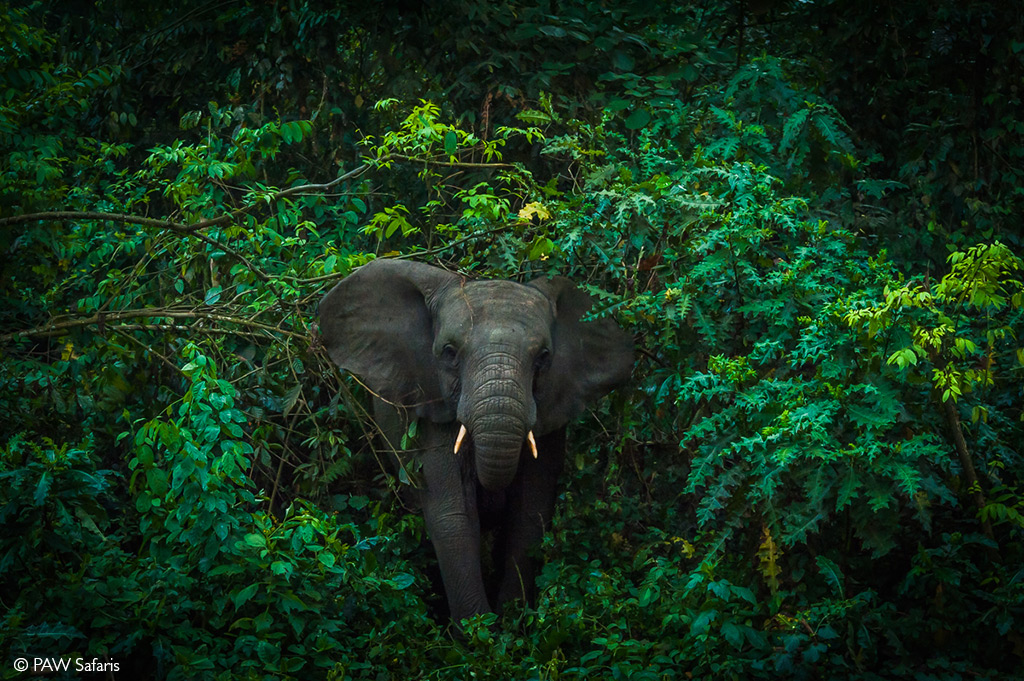 There are two species of African elephant – the savannah elephant (Loxodonta africana) and the forest elephant (Loxodonta cyclotis). As the names imply, the two generally occupy distinct habitats and are theoretically easily distinguishable. However, forest and savannah elephants are known to produce fertile hybrids in regions where their habitats overlap, particularly in Kibale National Park in Uganda. Visual differentiation between the different species and hybrids is an essential aspect of research into their behavioural and ecological variations. Now, a newly published study from Kibale has laid the groundwork for this process.
There are two species of African elephant – the savannah elephant (Loxodonta africana) and the forest elephant (Loxodonta cyclotis). As the names imply, the two generally occupy distinct habitats and are theoretically easily distinguishable. However, forest and savannah elephants are known to produce fertile hybrids in regions where their habitats overlap, particularly in Kibale National Park in Uganda. Visual differentiation between the different species and hybrids is an essential aspect of research into their behavioural and ecological variations. Now, a newly published study from Kibale has laid the groundwork for this process.
Astonishingly, despite decades of genetic evidence, forest elephants were only recognised as a separate species (rather than a subspecies of the savannah elephant) by the International Union for the Conservation of Nature at the start of 2021. The reasons for the delay in their recognition were complex, but the existence of known fertile hybrids played a significant role.
In order to investigate the phenotype (the physical appearance) of the hybrids, the researchers first had to establish the most important (and easily assessed) differences between forest and savannah elephants. This they did by comparing nearly 300 reference images of elephants across multiple forest and savannah areas in Africa. As the direct study of shy elephant populations can be challenging, they aimed to identify morphological criteria that could be easily assessed on camera trap images. They also selected features that did not require precise measurements. Ultimately, six morphological criteria were identified: the position of the lobe of the ear in relation to the mandible, the distance between tusks and trunk, the tusk orientation (both in profile and when viewed face-on), the indentations of the temporal region/shape of the forehead and the curvature of the spine. The researchers were able to distinguish between forest and savannah elephants with 90% certainty using these criteria.

Both forest and savannah elephants are found in Kibale National Park, but little was known about the proportions of each species or the number of hybrids. Consequently, the next step of this study was to scrutinise the physical appearance of all elephants in the forested Sebitoli area of northern Kibale. Analysis of 1,408 videos from camera traps revealed that 36.8% of the elephants matched the savannah phenotype, 12.1% the forest phenotype and 51.1% an intermediate phenotype between the two. The latter probably includes the hybrids.
The difficulty arises because elephant hybrids are fertile, meaning that multiple levels of hybridisation are possible (a pure savannah elephant could cross with a pure forest elephant, or two hybrids could breed and so on). In addition, any population always has a degree of individual variation. Furthermore, forest elephants are known as a “paedomorphic form” of the savannah elephant. This means adult forest elephants more strongly resemble young savannah elephants, making it challenging to create a one-size-fits-all set of criteria.

Thus, the authors recommend further study combining genetic analysis and phenotypic characteristics. However, while genetic methods are precise, they are expensive and time-consuming, so the goal should be creating an accurate “species assignment key” as a simple tool to distinguish savannah, forest and hybrid elephants. The authors emphasise the importance of this process in terms of conservation efforts. The forest elephant is classified as Critically Endangered, and the savannah elephant is Endangered. Any effective conservation actions require “precise information on the biology, behaviour and reproduction of each species”, which makes identifying them essential.
Reference
Bonnald, J. et al. (2023) “Phenotypical Characterisation of African Savannah and Forest Elephants, with Special Emphasis on Hybrids: The Case of Kibale National Park, Uganda,” Oryx, 57(2), pp. 188–195
Further reading
Read more about Kibale National Park here.
To comment on this story: Login (or sign up) to our app here - it's a troll-free safe place 🙂.![]()






